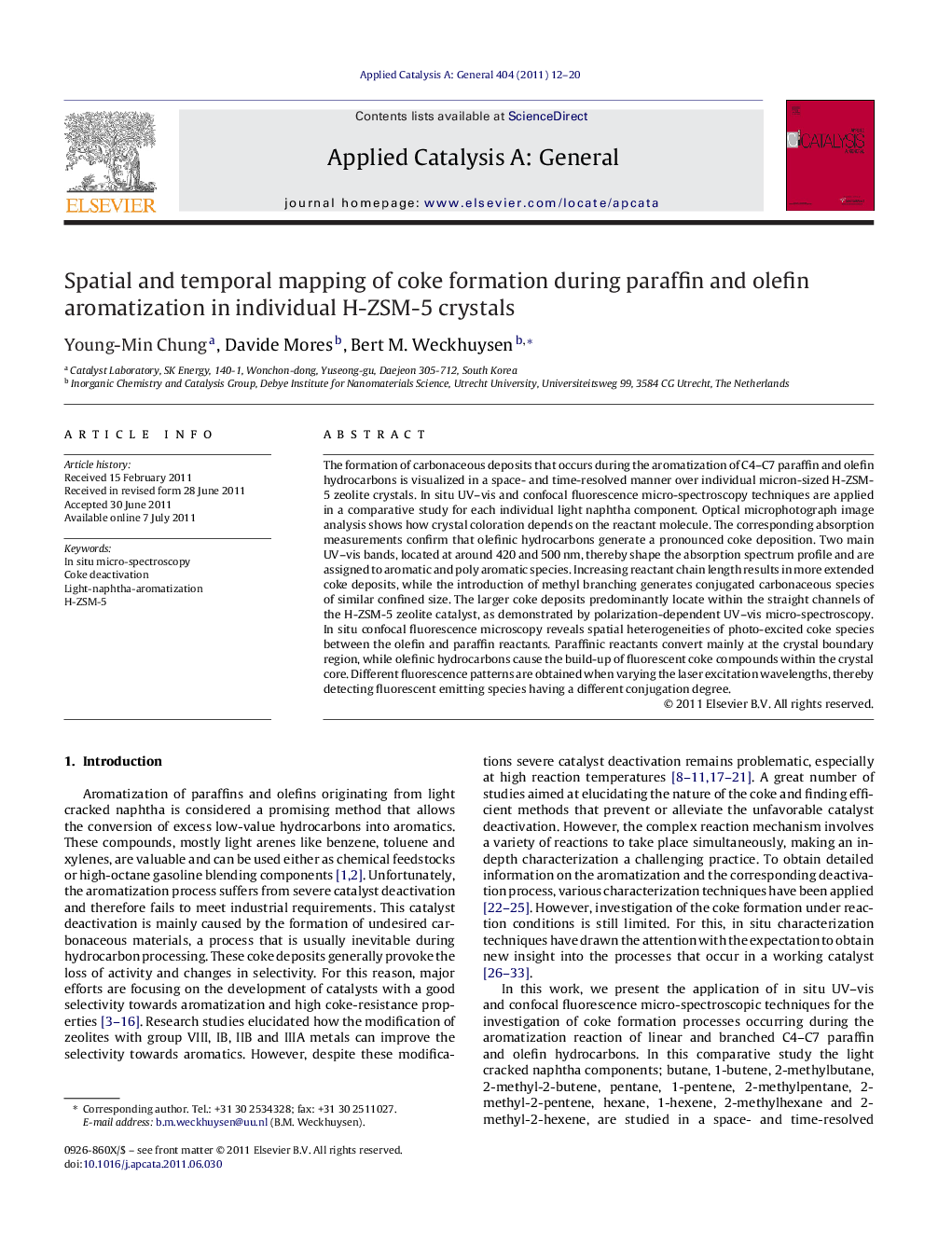| کد مقاله | کد نشریه | سال انتشار | مقاله انگلیسی | نسخه تمام متن |
|---|---|---|---|---|
| 41376 | 45887 | 2011 | 9 صفحه PDF | دانلود رایگان |

The formation of carbonaceous deposits that occurs during the aromatization of C4–C7 paraffin and olefin hydrocarbons is visualized in a space- and time-resolved manner over individual micron-sized H-ZSM-5 zeolite crystals. In situ UV–vis and confocal fluorescence micro-spectroscopy techniques are applied in a comparative study for each individual light naphtha component. Optical microphotograph image analysis shows how crystal coloration depends on the reactant molecule. The corresponding absorption measurements confirm that olefinic hydrocarbons generate a pronounced coke deposition. Two main UV–vis bands, located at around 420 and 500 nm, thereby shape the absorption spectrum profile and are assigned to aromatic and poly aromatic species. Increasing reactant chain length results in more extended coke deposits, while the introduction of methyl branching generates conjugated carbonaceous species of similar confined size. The larger coke deposits predominantly locate within the straight channels of the H-ZSM-5 zeolite catalyst, as demonstrated by polarization-dependent UV–vis micro-spectroscopy. In situ confocal fluorescence microscopy reveals spatial heterogeneities of photo-excited coke species between the olefin and paraffin reactants. Paraffinic reactants convert mainly at the crystal boundary region, while olefinic hydrocarbons cause the build-up of fluorescent coke compounds within the crystal core. Different fluorescence patterns are obtained when varying the laser excitation wavelengths, thereby detecting fluorescent emitting species having a different conjugation degree.
Figure optionsDownload high-quality image (164 K)Download as PowerPoint slideHighlights
► Olefin reactants generate enhanced coke formation.
► Alkyl-branching causes confined carbonaceous deposits.
► Large coke compounds mainly form in the straight pores of H-ZSM-5.
► Paraffin reactants convert at the zeolite surface.
► Linear olefins produce graphitic-like external layer.
Journal: Applied Catalysis A: General - Volume 404, Issues 1–2, 19 September 2011, Pages 12–20